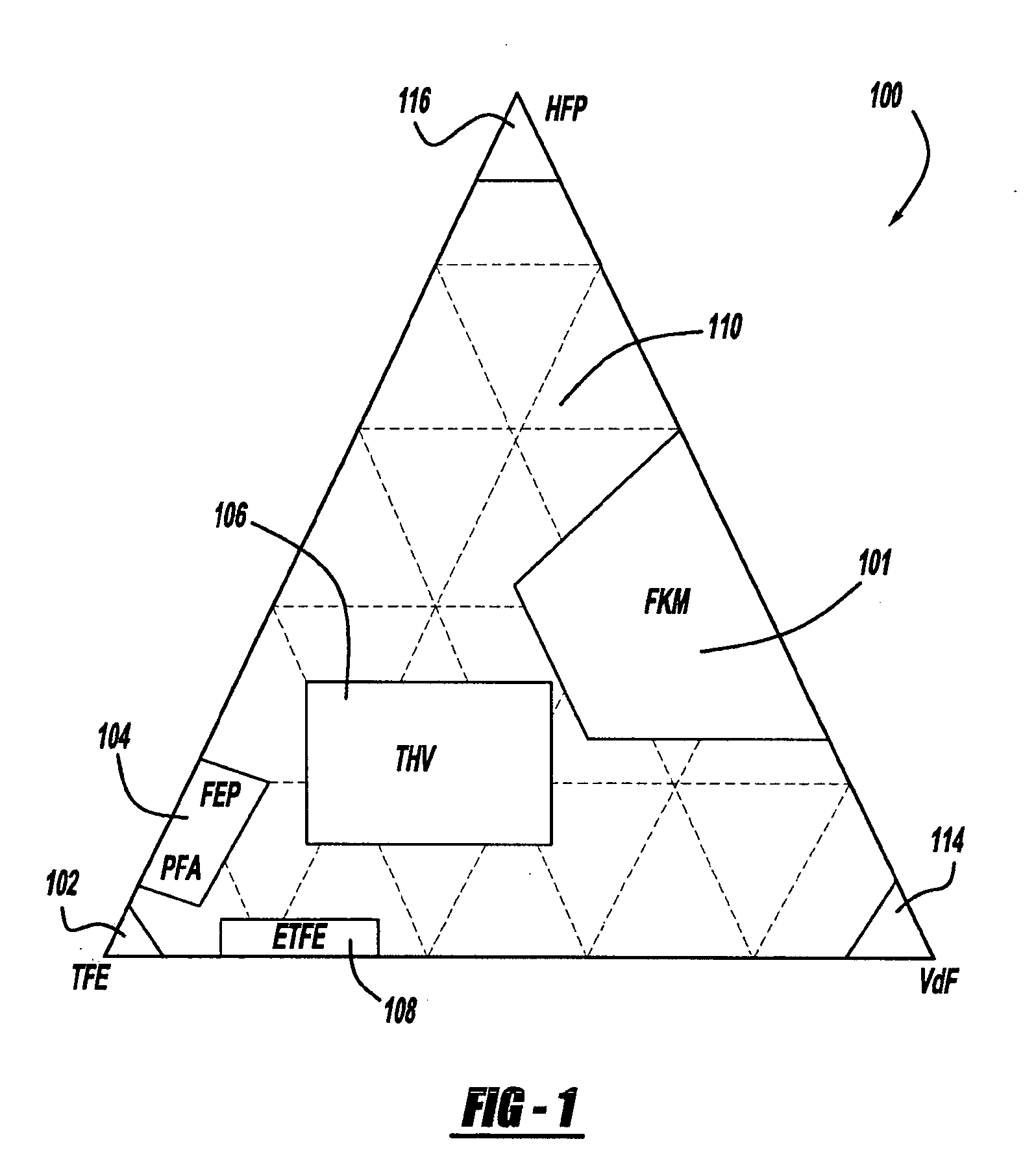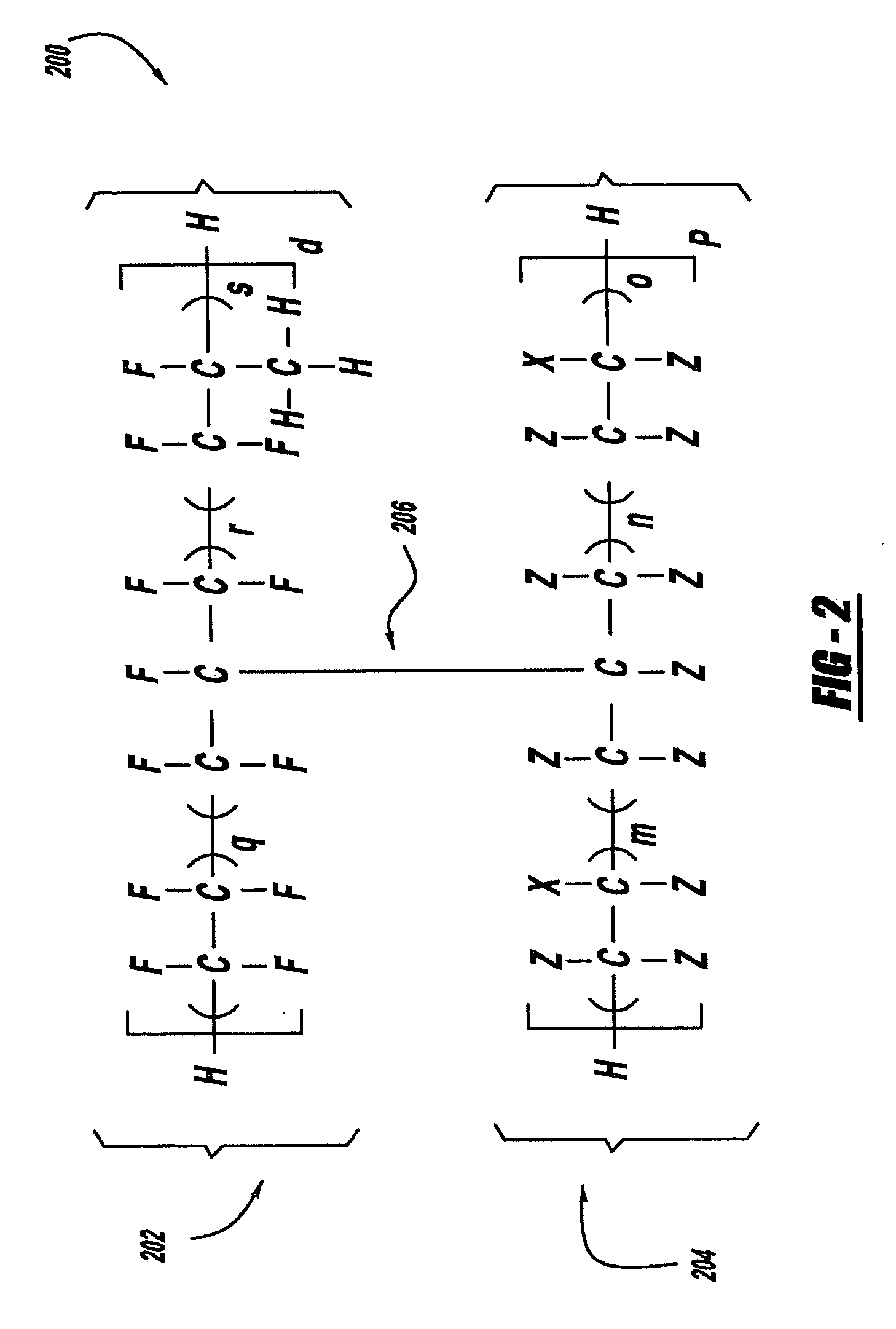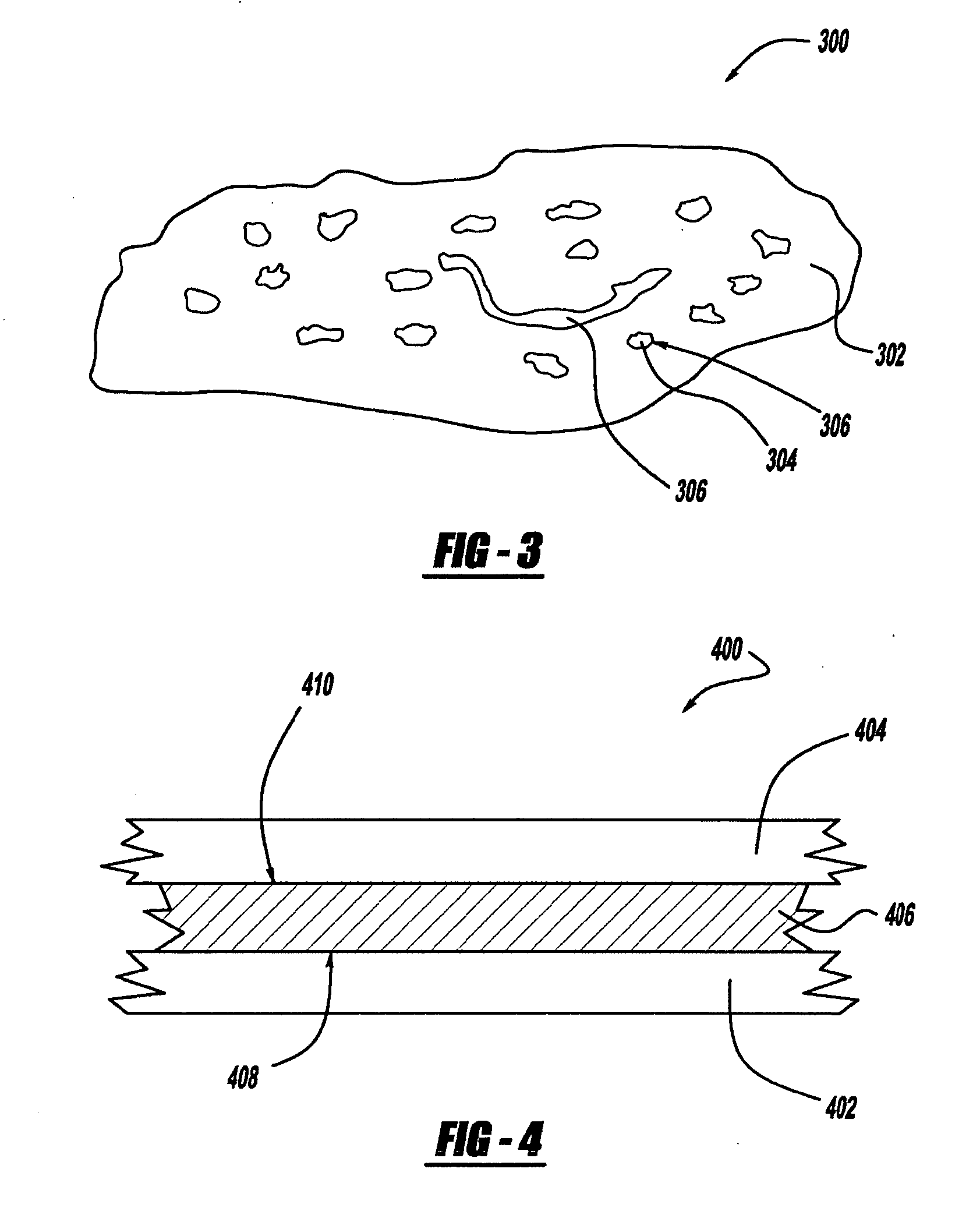Surface bonding in halogenated polymeric components
a technology of halogenated polymer components and surface bonding, which is applied in the direction of decorative surface effects, decorative arts, etc., can solve the problems that halogenated polymer layers are also difficult to bond into composites
- Summary
- Abstract
- Description
- Claims
- Application Information
AI Technical Summary
Benefits of technology
Problems solved by technology
Method used
Image
Examples
Embodiment Construction
[0200] In a first set of Examples, a mixture of tetrafluoroethylene / hexafluoropropylene / vinylidene fluoride emulsion (Dyneon tetrafluoroethylene / hexafluoropropylene / vinylidene fluoride-340C) in aqueous base and epoxy-based aqueous silane solution is formulated to evaluate bonding of etched PTFE and Hytrel type TPE (2022HS grade, polyester-based TPE from DuPont) samples. The epoxy-based aqueous silane solution is prepared by combining epoxy resin (Vantico™ GT grades from Ciba) and polyethylene oxide (PEO) modified silicone copolymer as a coupling agent for the silicone to the epoxy. The 50 / 50 (on a weight basis) mixture of tetrafluoroethylene / hexafluoropropylene / vinylidene fluoride emulsion and epoxy-based silicone solution is applied both to a surface of etched PTFE and to a surface of a Hytrel sample. Eight samples of etched PTFE specimens independently etched either by chemical means (sodium ammonia and sodium naphthalene) or by physical mean (plasma) on the bonding surface of PTF...
PUM
| Property | Measurement | Unit |
|---|---|---|
| pressure | aaaaa | aaaaa |
| cross-sectional diameter | aaaaa | aaaaa |
| diameter | aaaaa | aaaaa |
Abstract
Description
Claims
Application Information
 Login to View More
Login to View More - R&D
- Intellectual Property
- Life Sciences
- Materials
- Tech Scout
- Unparalleled Data Quality
- Higher Quality Content
- 60% Fewer Hallucinations
Browse by: Latest US Patents, China's latest patents, Technical Efficacy Thesaurus, Application Domain, Technology Topic, Popular Technical Reports.
© 2025 PatSnap. All rights reserved.Legal|Privacy policy|Modern Slavery Act Transparency Statement|Sitemap|About US| Contact US: help@patsnap.com



